AR-15s are a bit like people. They come in all shapes and sizes — endlessly customizable, and every small thing can seemingly be changed.
This includes barrel length. The AR-15 is home to many barrel lengths with some popular sticklers. Today, we are diving into the more popular lengths and detailing their benefits and downsides.
Why is barrel length a factor for the AR-15? Isn’t there just a perfect barrel length we can stick to? Unfortunately, nothing is ever that simple.
You have three major factors to consider when choosing barrel length for your AR-15. And we’ll get into all that and more, so keep reading to learn the best barrel length for you.
Table of Contents
Loading…
What To Consider When Determining the Best AR Barrel Length
Legality
AR stands for Armalite Rifle, but plenty of ARs aren’t rifles. In the United States, the shortest barrel length you can have on a Title 1 firearm is 16 inches.
Anything shorter falls under the National Firearms Act and becomes a short-barrel rifle or, if it’s stockless, becomes an AR pistol.

Short-barreled rifles may not be legal in your states. If they are legal, you must obtain a tax stamp, which requires paperwork, fingerprints, a photo, etc.
If it’s an AR pistol, it falls under pistol laws, which may vary in your state. This can be beneficial, but it could also be difficult to obtain if you are under the age of 21.
Check out our full guide on AR Pistols vs. SBRs to learn more about the difference.
Purpose
What’s the purpose of your particular firearm? Different purposes will have different requirements.
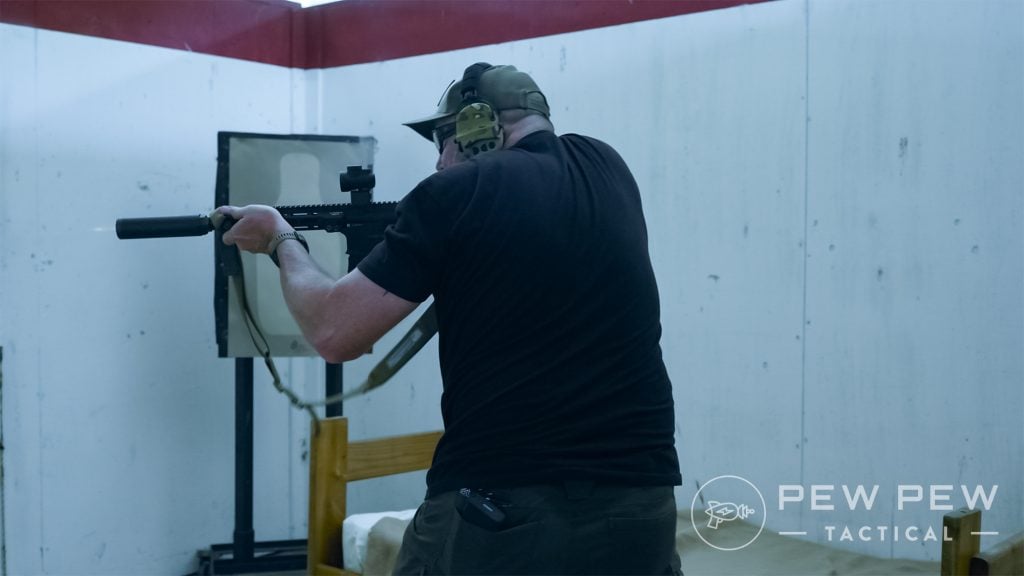
An AR-15 used for NRA High Power shooting is different than an AR designed for close-quarter use. Outdoor activities like hunting typically benefit from longer barrels, as do precision AR-15s. Defensive ARs tend to be shorter and lighter.
Caliber
Another important factor is caliber. AR-15s come in tons of calibers. These calibers benefit from different barrel lengths. Calibers like 5.56 benefit from longer barrels and gain maximum velocity from a longer barrel.
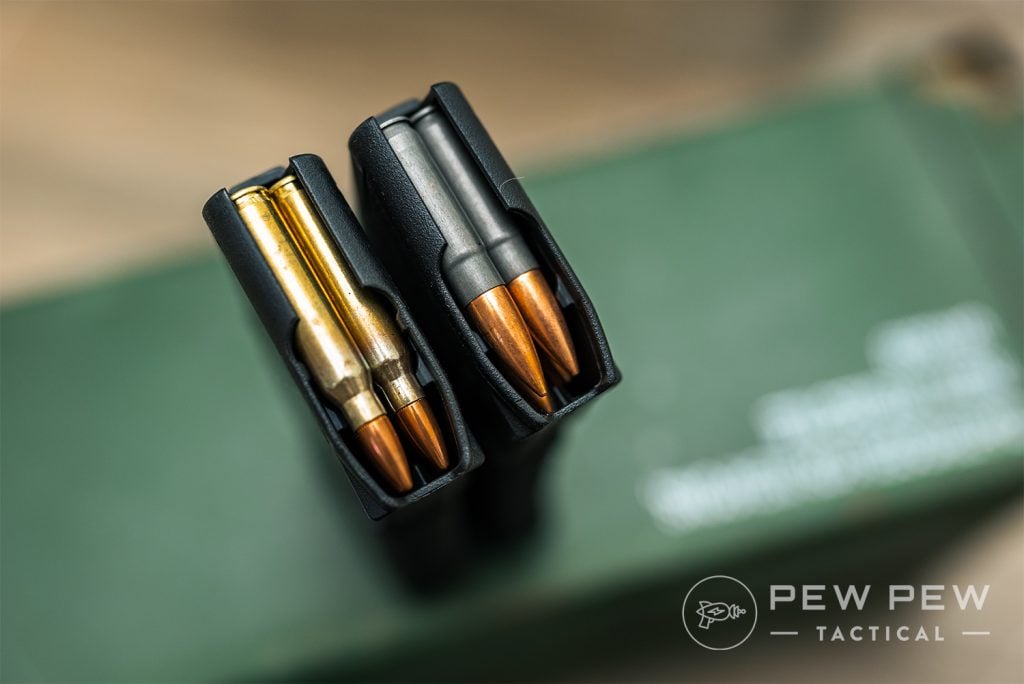
Other cartridges like .300 Blackout are specifically designed for shorter barrels. Others fit perfectly fine in something a bit more mid-length. If you want to get the most out of your gun and its caliber, then you have to consider its barrel length.
Best AR-15 Barrel Lengths
18 to 20 Inch Barrels
At 18 to 20 inches, we are in the proper rifle territory for an AR-15. Technically, any gun with a buttstock and rifled bore is more or less a rifle legally. We use the term rifle to distinguish it from the classic AR-15 carbine.
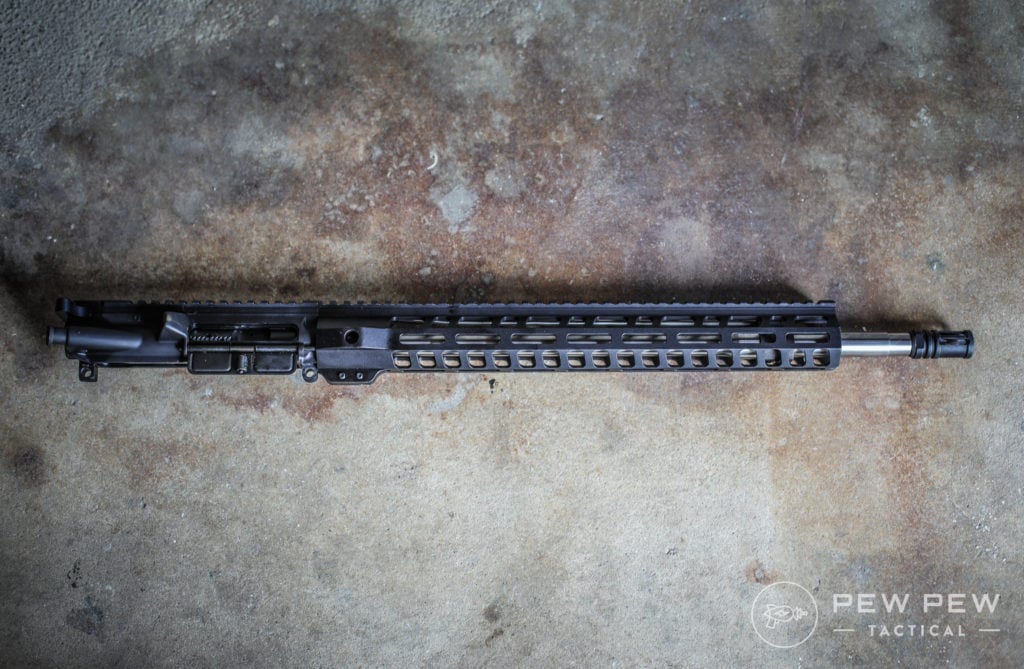
The original AR-15, designed by Eugene Stoner, featured a 20-inch barrel. Twenty inches is the length required to make the most out of .223 Remington and 5.56 NATO loads.
The 18-inch options are slightly trimmer, better-balanced rifles. They are roughly the shortest you can use with a standard rifle gas system. (Not mentioning dissipators and their larger gas ports.) A rifle-length gas system provides the softest and least violent recoil impulse.
5.56 and .223 Ammo in Stock
It cuts muzzle blast and flash. There is hardly any concussion with rifle-length barrels, which makes them very nice shooters.
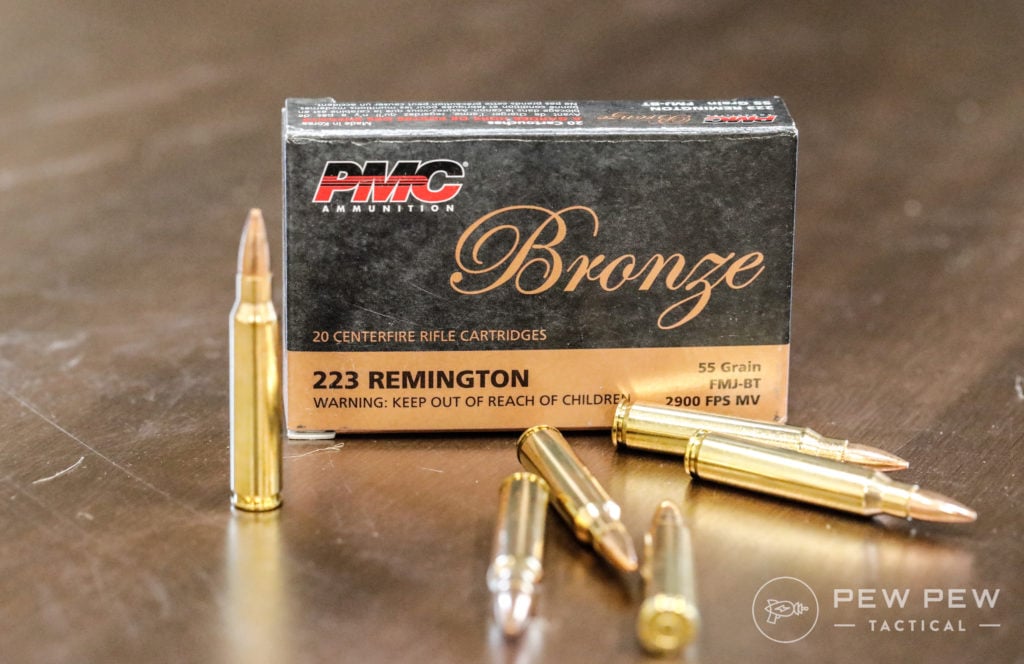
These are super smooth and very enjoyable shooting rifles. They work best with faster-moving, typically smaller projectiles. Cartridges like the original .223 Remington and 5.56 meet their peak velocity from a rifle-length barrel.
Cartridges like the .224 Valkyrie benefit from the 20-inch barrels. The famed 6.5 Grendel works best with 18-inch barrels for long-range hits. The long barrels and gas systems make these quite nice for long-range shooting.
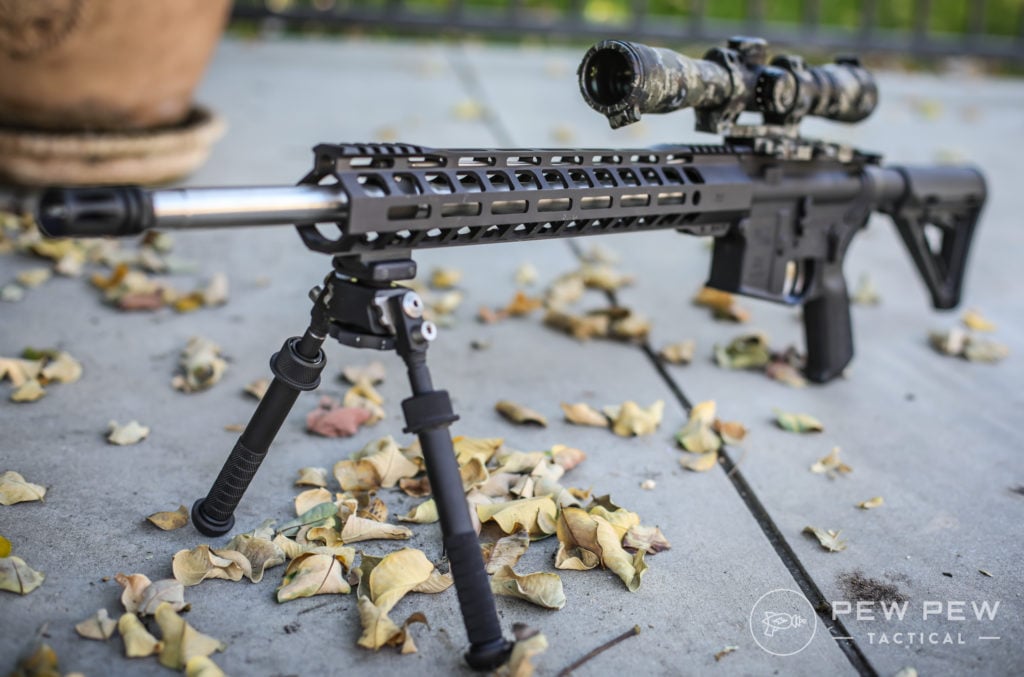
If you were to build a long-range intermediate caliber rifle, then the rifle-length barrels are perfect. Longer barrels allow you to maximize velocity and range. They make great hunting rifles for anything from deer to prairie dogs.
A longer barrel also creates a slightly less agile and handy rifle. It doesn’t work well when clearing rooms or tight quarters of home defense. While Marines in Fallujah certainly cleared buildings with the big M16, it’s not the optimum tool for that job.
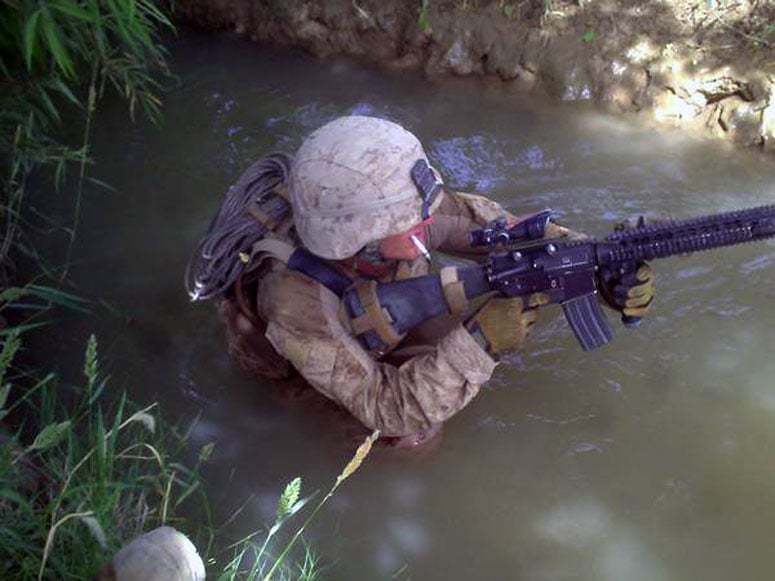
Personally, I love rifle-length ARs, and it’s my favorite genre of the AR rifle. Settling behind a set of iron sights with that long sight radius and minimal recoil impulse, ringing steel at 200 to 300 yards is immensely satisfying.
13.7 to 16 Inch Barrels
In the United States, 16 inches is the shortest a rifle barrel can get without involving the ATF and federal government. You can go shorter, but it requires a tax stamp. With that said, you’ll often see 14.5-inch barrels with muzzle devices pinned and welded to bring the length to 16 inches.
The same goes for 13.7-inch barrels. The shorter barrel allows for a longer, more complicated muzzle device. The most common mixture is a 13.7-inch barrel and a suppressor-ready muzzle device.
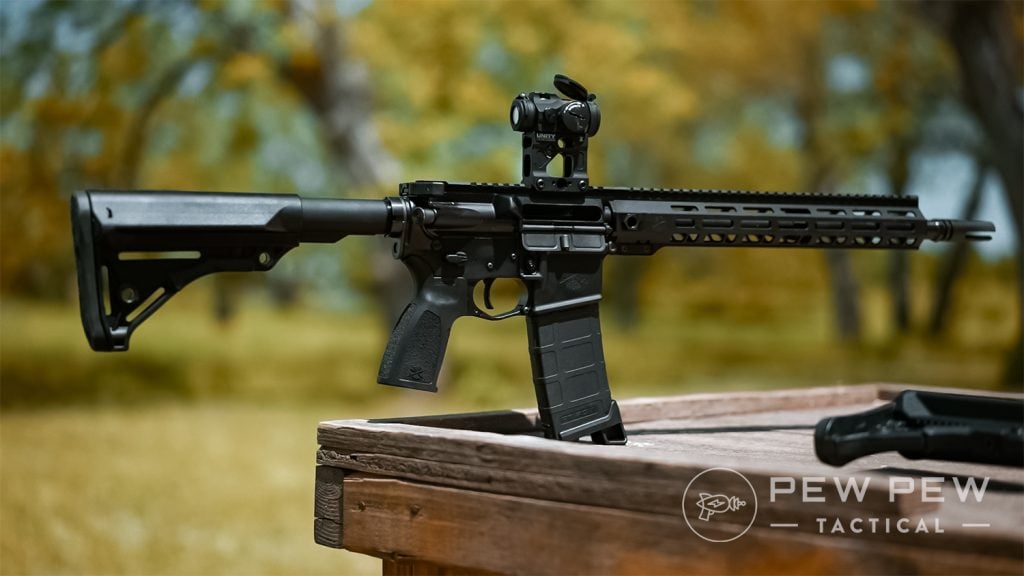
These create what are often called carbines. Carbines are lighter, shorter versions of rifles. Carbine-length barrels are the most popular option because they tend to meet the right barrel length.
Not only are they easily obtainable, but they tend to be an all-around awesome barrel-length option. While these guns are not as smooth as rifles, they are still very easy to shoot. The barrel length is just right for a wide variety of tasks.
In the past, these barrels were paired with carbine-length gas systems, which were fairly short. The carbine-length gas system is reliable and doesn’t deliver a harsh recoil impulse. The mid-length gas system has recently become popular and offers less recoil and a more controllable, less violent impulse.
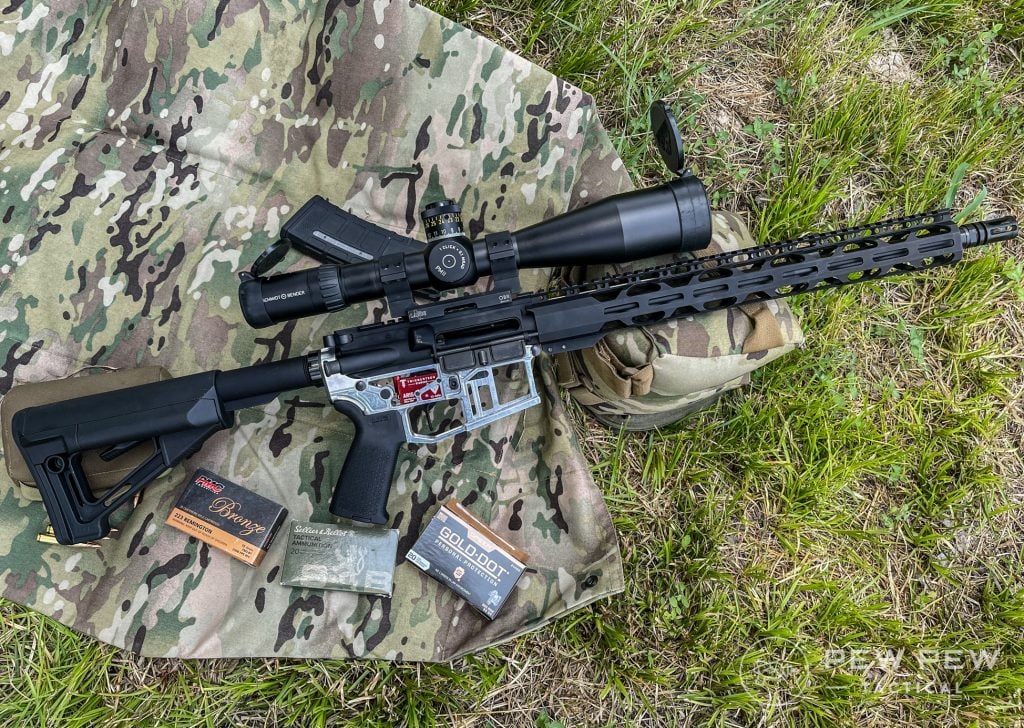
The shorter barrels make these carbines more maneuverable and easier to use indoors. For home defense, they tend to work well. They aren’t too long, and you don’t have to go the large format pistol or SBR route to get a functional weapon.
If you want to compete in something like a PCC competition, the 16-inch barrel works well. It tames recoil and allows you to compete well within the rules of the competition.
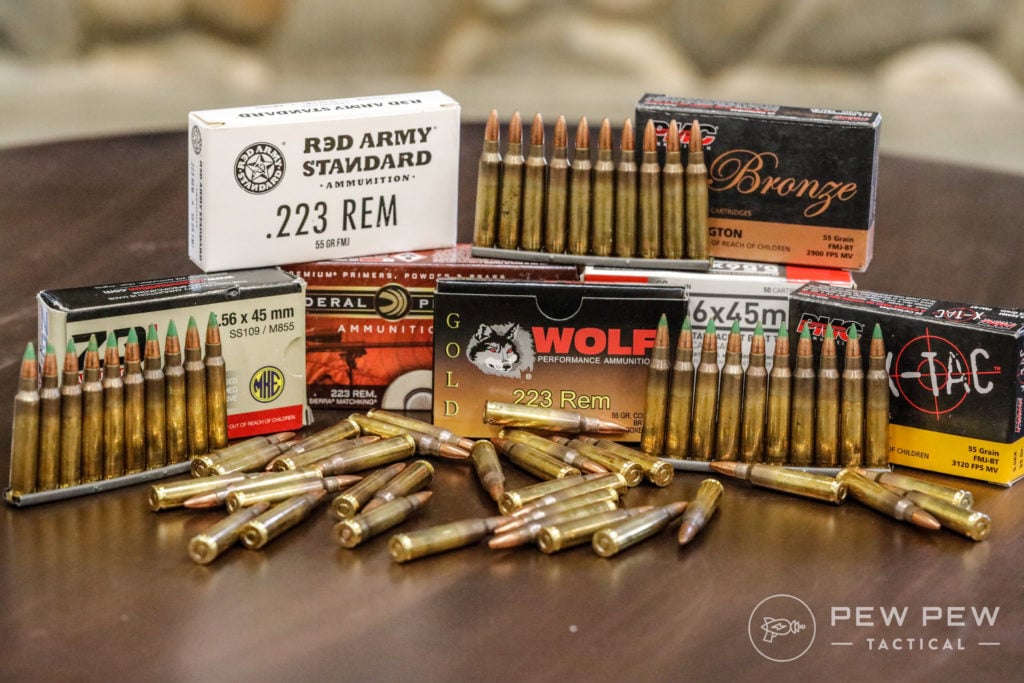
The most popular caliber for this configuration is 5.56. The cartridge can still reach out quite far from a 16-inch barrel and carry a good amount of velocity with it. In the Marine Corps, they still use the M4 with its 14.5-inch barrel in a 500-yard qual.
Outside of 5.56, the 9mm is popular for the aforementioned PCC competition. It’s also the barrel length that works with the 6.8 SPC cartridge.
9mm Ammo in Stock
10.3 to 12.5-inch barrels
When we get into the short configurations of the AR-15, we have three popular barrel lengths. The 10.3, the 11.5, and the 12.5-inch barrels. These are all super short carbine barrels. The 10.3 was first popularized by the MK 18 and CQBR (Close Quarters Battle Receiver) with the Navy SEALs.
Various early AR-15 carbines, like the XM177 series, experimented with barrels as short as 10 to 11.5 inches. There is a group of guys who love short barrels. The only thing they seem to love more than their short barrels is arguing over which is better.
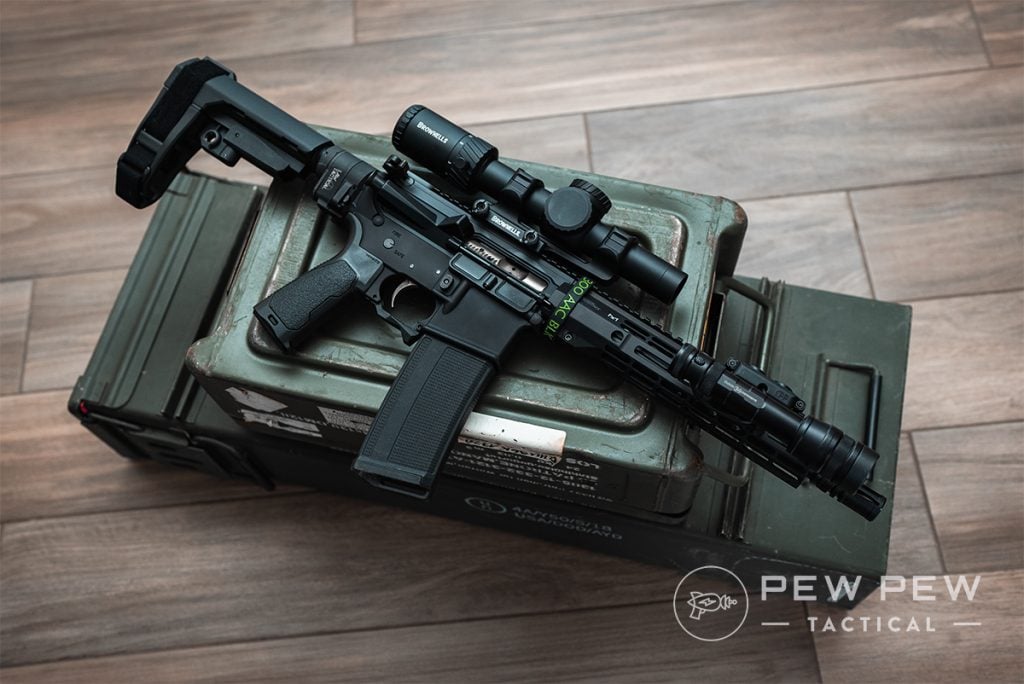
The 10.3 is the shortest and most maneuverable, but it also has the steepest drop-off in velocity with the traditional 5.56 and .223 Remington loads. As you gain inches, you gain effective range and velocity with less maneuverability. Longer barrels also give a smoother recoil impulse and less concussion and muzzle blast.
Regardless of which of these shorties you pick, you will get a ton of muzzle flash, blast, and noise. They can be downright uncomfortable to shoot indoors. You won’t make friends at the range with one of these.
All three of these super short barrel lengths make for excellent close-quarters weapons. They are intended and were designed for close urban environments. For the average person, that makes them light and handy.
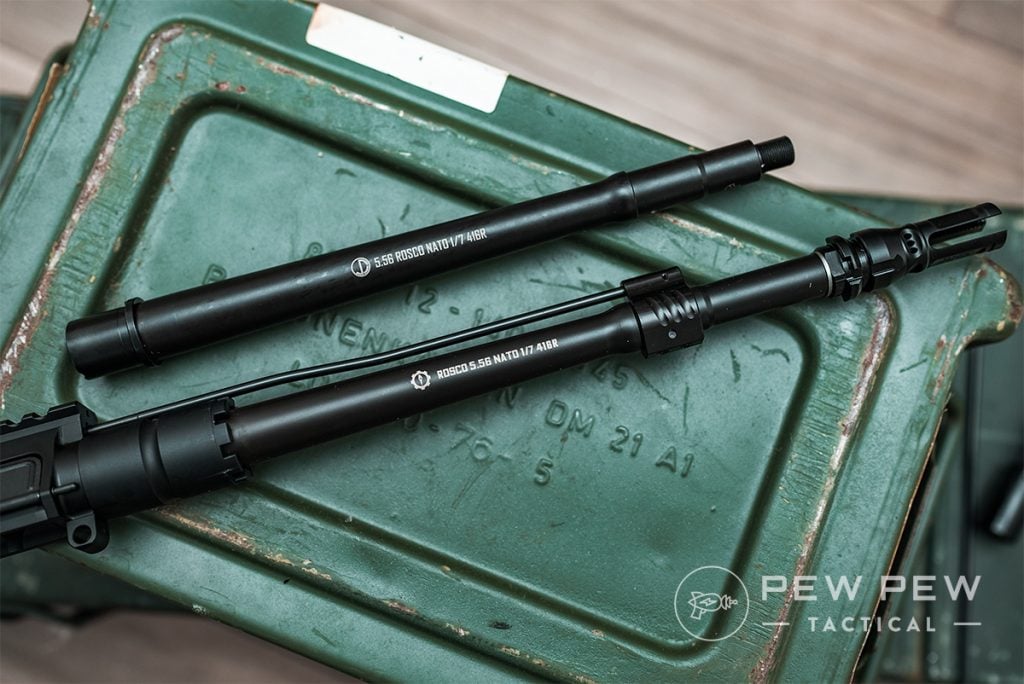
They are admittedly fun and excellent for home defense. The main downside is you have to settle for an AR pistol or an SBR and tax stamp. One of the biggest benefits of these short guns is the ability to add a suppressor without making your weapon too long for use indoors.
For these super short barrels to maximize their 5.56 effectiveness, you tend to need heavier, less common ammo. They’ll shoot the lightweight 55- and 62-grain stuff fine, but for defensive use, the 77-grain helps with effectiveness.
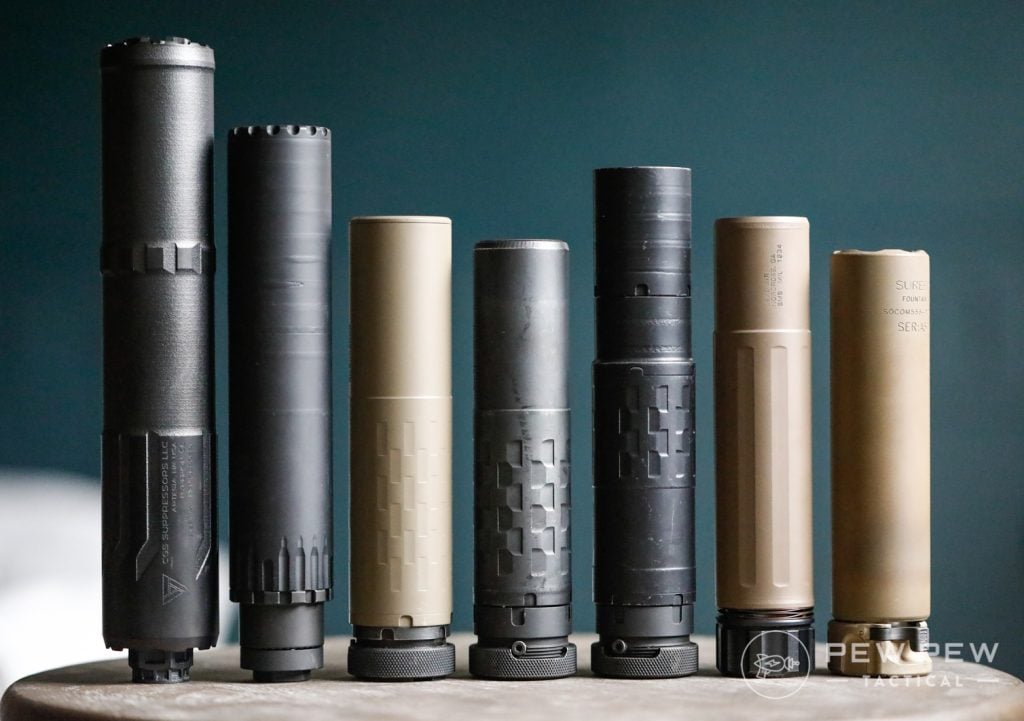
While 5.56 works, these barrel lengths are also well suited for the .300 Blackout.
The .300 Blackout was created for short barrels; the caliber shines in these guns. Mix in a suppressor with subsonic loads, and you now have a quiet option for home defense.
.300 BLK Ammo in Stock
8 to 10-inch barrels
In the 8- to 10-inch realm, we get ultra-short. These guns look more like SMGs than rifles or carbines. These super platforms are designed to maximize maneuverability and close-range use.
Like the 10.3 to 12.5, you are limited to large format pistols or registered SBRs with these short barrels.
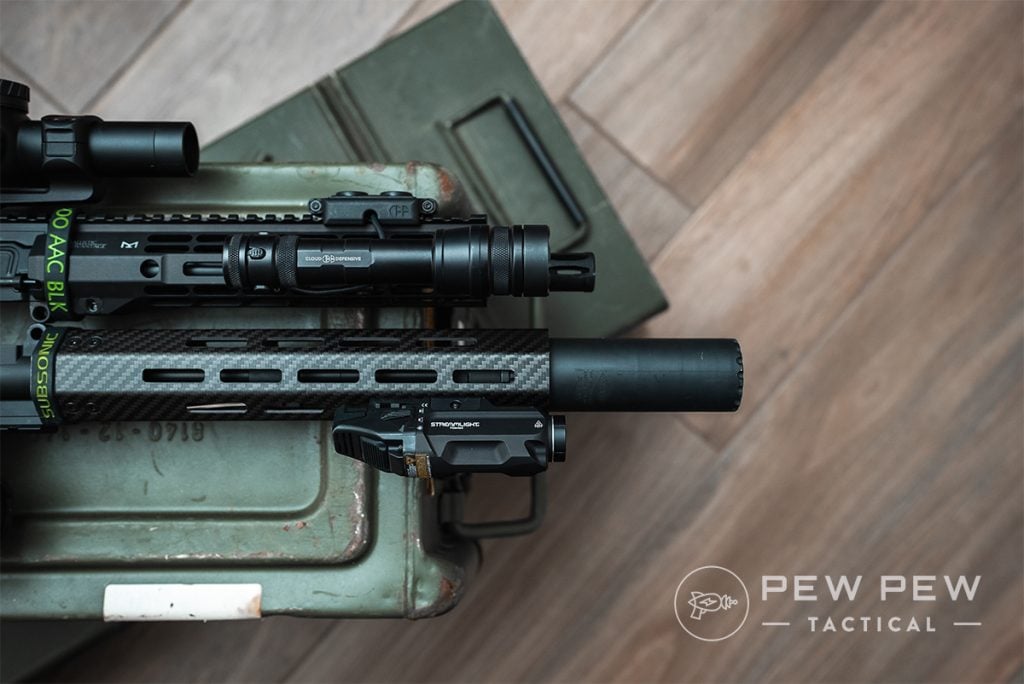
These are not well suited for the 5.56 round. It has no time to burn enough gas to get the round moving very fast. It may function but is the least effective 5.56 or .223 Remington solution. When we get to these barrels, we move into a situation that often uses specialized cartridges.
The .300 Blackout does exceptionally well in these lengths. AAC designed the .300 Blackout for barrels as short as 9 inches. Going from 8 to 10 is the natural realm of the .300 Blackout.
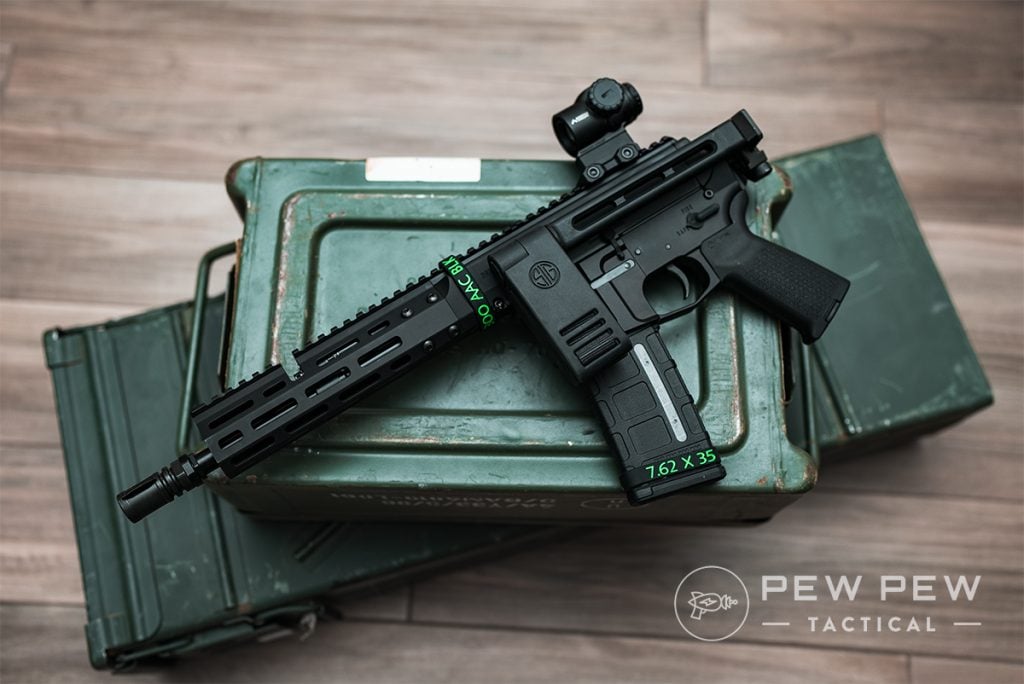
Beyond Blackout, these lengths are popular with PDW-type cartridges like the 5.7x28mm and even the 4.6 with CMMG’s FourSix AR. These barrel lengths mix well with these cartridges, allowing them to throw lead fast.
Pistol calibers are also popular in these barrel lengths. They offer a slight velocity increase and provide a very small but controllable platform for close-quarters use.
Guns with these barrel lengths work well with suppressors while maintaining a short overall profile. With the right caliber and can, you can have a quiet, easy-to-use home defense weapon.
9mm Ammo in Stock
Under 8 Inches
When we get to under 8 inches, we move into the realm of novelty guns with the 5.56.
Sure, your 7.5-inch AR-15 functions, and I wouldn’t want to be on the other end, but it is almost pointless. The velocity trade-off, mixed with the crazy high concussion and muzzle flash, makes these noisemakers more than anything else.
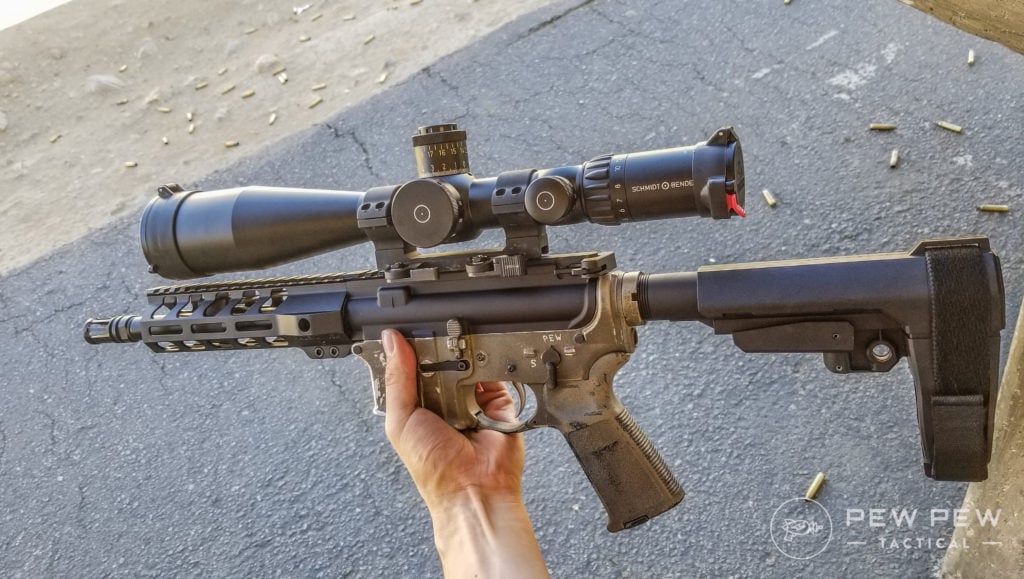
When we get into the .300 Blackout, we still have some effective rifles, or well, pistols or SBRs. These crazy short lengths should most certainly be paired with a suppressor. They are almost made for suppressed use, and there isn’t a huge point to these lengths without a can.
With PCCs, you can go quite short and still have a barrel long enough to allow pistol calibers to reach their desired velocity to function properly. When you get into those 5-inch barrels, you’re best paired with a pistol caliber.
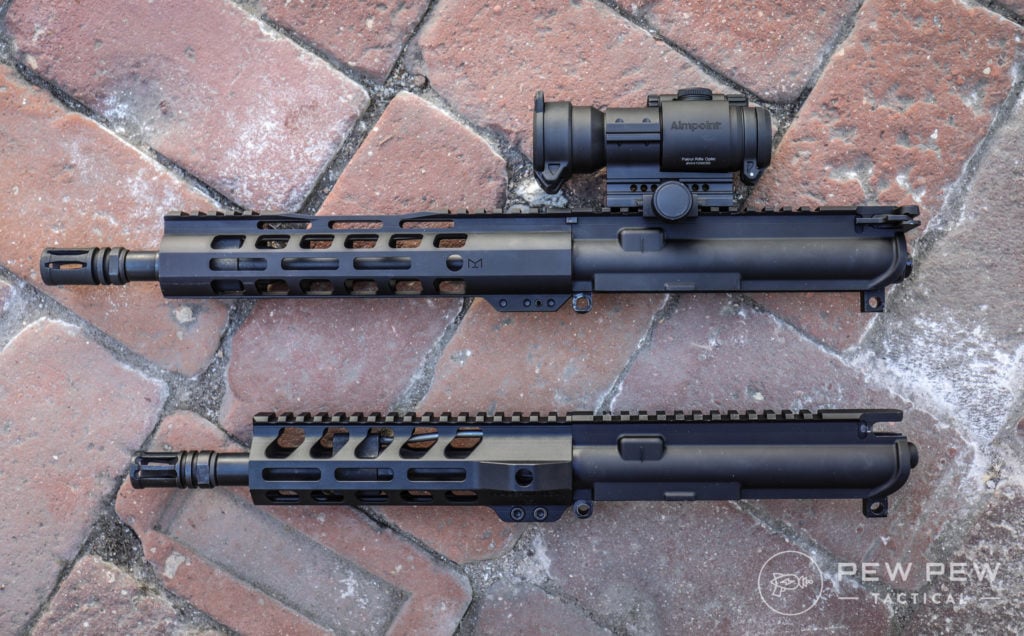
The benefit here would be an ultra-short and lightweight weapon for close-quarters use. There is the old low visibility design that allows the weapon to be easily carried and concealed inside a vehicle. Heck, ARs this short could be used inside a vehicle without much difficulty.
These short barrel lengths restrict you to ultra-close quarters and work well indoors.
Final Thoughts
Barrel length matters a whole lot. It can change how the rifle performs and how it handles. Too short with the wrong caliber gives you a novelty. Too long with the wrong caliber is just silly.
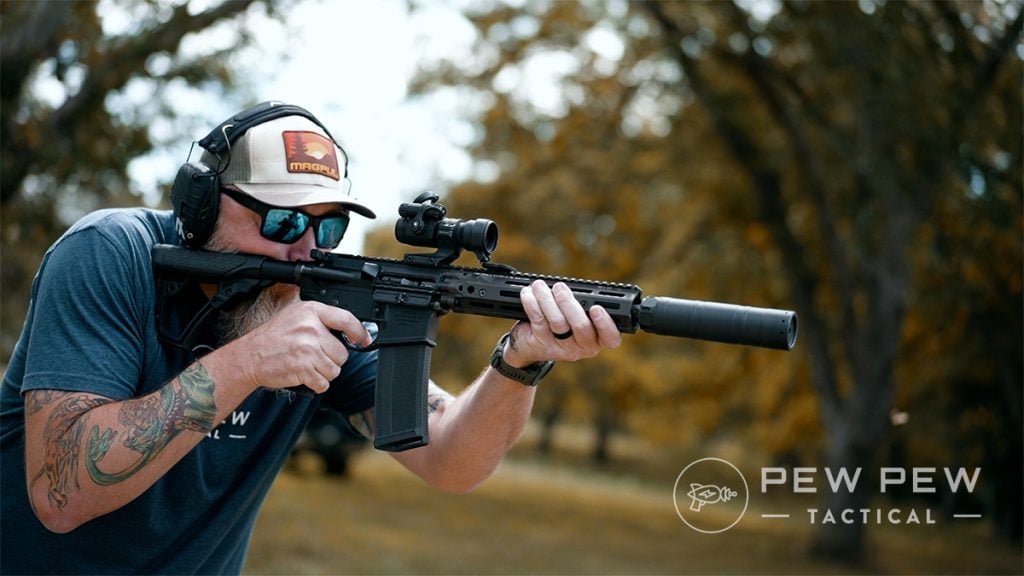
Barrel length should be a big consideration in your rifle plans.
What’s your favorite combination of barrel length and caliber? What’s your AR for? Let us know below! Looking for the best AR barrels on the market? Check out our guide to the Best AR-15 Barrels & Manufacturers.

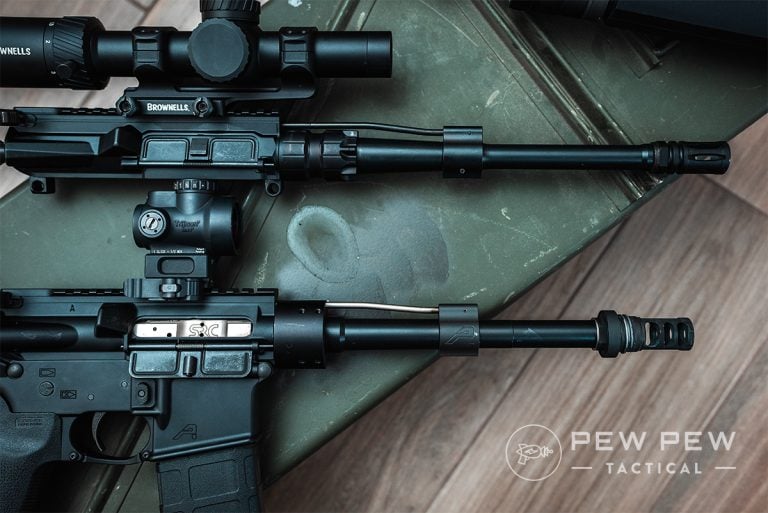
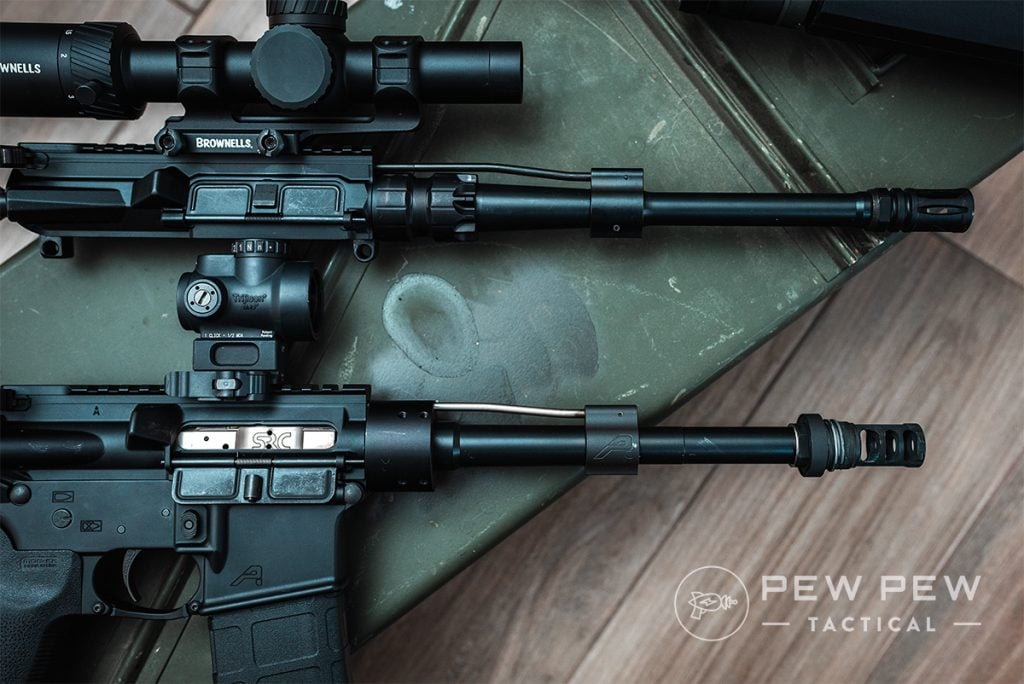







4 Leave a Reply
What effect does barrel shape have on anything?
Barrel shape can affect the overall weight, how fast the barrel heats up and starts to affect accuracy, as well as barrel harmonics and stiffness which can also affect accuracy.